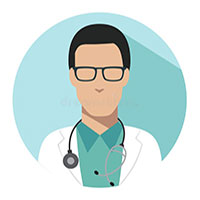About Orthodontics
Orthodontics is a dental specialisation that mainly deals with the diagnosis, prevention, and correction of misaligned teeth and jaws. Orthodontic doctors play a pivotal role in improving one’s oral health, function and appearance. Beyond bracing and straightening misaligned teeth, the scope of orthodontic surgery is way wider. It comprises addressing various structural and functional aspects of the mouth. In addition to enhancing one’s aesthetics, orthodontics functions in maintaining proper oral hygiene, reducing the risk of tooth decay, diseases of the gum, and even digestive issues due to difficulty or incorrect chewing.
Orthodontics have witnessed significant growth over the years, which was largely driven by advancements in technology and increased understanding of the relationship between one’s oral health and their overall well-being. In the real world, many have directly witnessed the replacement of traditional braces with ceramic ones and more advanced clear aligners. These made orthodontic treatments achieve greater rates of success whilst achieving one’s dental correction without compromising their cosmetic aspects. Today, orthodontics has made treatment more effective, comfortable, and aesthetically pleasing.
Orthodontic treatments can begin as early as one’s childhood by developing preventive measures to correct potential issues before their teeth fully develop. Besides, the current trend inclines more towards adults seeking treatment, which reflects the importance of well-aligned teeth at any age.
The scope of orthodontics is very wide, and understanding it requires a specific look into the conditions it addresses and the available treatments. As many become aware of the availability of such services, orthodontics can grow as a key component of one’s comprehensive dental care and overall well-being.
What is orthodontics?
Orthodontics is a dental speciality that focuses on diagnosing and preventing diseases and misalignment of jaws and teeth. Besides appearance improvement, orthodontics also ensures proper functioning and alignment of teeth. Crooked, misaligned, or overcrowded teeth can lead to more problems, such as difficulty in chewing and speaking and more serious issues, such as temporomandibular joint disorders and chronic headaches.
Orthodontics employs an assortment of devices and methods to correct the mentioned problems. These include traditional metal braces, ceramic braces, clear aligners, and retainers, among others that sometimes involve surgeries. Treatment is usually preceded by a thorough evaluation. X-rays, photos, and impressions of the teeth are often essential for the orthodontist to design specific treatments for each patient.
One of the key primary objectives of orthodontics is to create a healthy bite. A healthy or correct bite is defined as when the teeth in both jaws are in their accurate position, thereby allowing for more comfortable chewing and speaking. Misalignment of teeth and jaws is termed malocclusion, which has far-reaching implications beyond oral health into physical self-esteem and quality of life.
Diseases treated under orthodontics
Orthodontics addresses a wide range of dental and associated skeletal conditions related to malocclusion and malformation. If not treated, such conditions can cause problems like tooth decay, gum disease, or, in more severe cases, jaw pain. Some of the commonest problems orthodontic treatment caters to are as follows:
1. Malocclusion (Misaligned teeth and jaws):
Malocclusion, as previously discussed, is the incorrect positioning of teeth and jaws when they close. Malocclusions are of several types, with the most common being overbite, underbite, and crossbite. Either one of them can cause difficulty in chewing and speech, which presents as an unsatisfactory facial appearance. The goal of treating malocclusion is functional and aesthetic improvement.
Different types of malocclusions are as follows:
- Overbite: In the case of an overbite, there is a significant overlap of the front upper teeth upon the front lower teeth. This can cause severe and excessive wear on the teeth. If it goes unattended, it might cause pain in the jaw and harm to the gums.
- Underbite: Underbite occurs when the lower jaw protrudes forward with respect to the upper jaw. This can cause immense strain to the lower jaw, resulting in pain. Additionally, underbite can also cause chewing and speaking problems.
- Crossbite: With a crossbite, some of the upper teeth will be indoors. In other cases, some of the upper teeth will be placed outside the lower ones. In such a case, it can lead to uneven wear and tear on the teeth, gum recession, and facial asymmetry if left unchecked.
- Open Bite: An open bite occurs when both the upper and lower jaws do not meet when closed. This can often cause problems in biting, chewing, and speaking.
2. Crowded teeth:
Crowding is a condition characterised by insufficient space in the mouth so as to accommodate all the teeth in a well-aligned manner. For this reason, they become overlapped, twisted, or displaced. Poorly aligned teeth present a less desirable cleaning surface area. This increases the risk of decay and gum disease. Orthodontically, this can be corrected by expanding one’s arches or removing certain teeth so that there is enough space, thereby addressing the issue.
3. Issues with spacing:
Spacing issues are either having too much space, leading to wide gaps in the teeth, or too little space, causing difficulty aligning the existing teeth. This may be due to missing teeth, incorrect jaw size, or teeth that are smaller or larger than normal size. Such spacing issues can compromise one’s bite or chewing and increase the risk of gum disease, which can be because of the high risk of bacterial growth in the created gaps.
4. Temporomandibular joint (TMJ) disorders:
TMJ disorders can be corrected by orthodontics as these diseases are associated with the jawbone that connects to the skull. TMJ disorders might cause pain in the jaw joint and the muscles that manipulate jaw movement. Such conditions could be related to disorders such as malposition of the teeth and jaws, and orthodontic treatment will help people with the symptoms as orthodontic treatment surgically corrects the bite and helps reduce stress on the joint.
5. Overjet:
Overjet is a condition characterised by horizontal protrusion of the upper front teeth, also known as ‘buck teeth’. This can affect one’s facial appearance as they cannot close their lips successfully, which can lead to an increased risk of injury to the front teeth. Overjet can be treated by braces, which can correct the protruding front teeth.
6. Impacted teeth:
An impacted tooth is one that has failed to erupt into its normal position within the dental arch. This normally happens to the third molars, the wisdom teeth; however, some other teeth may be impacted. The impacted teeth can lead to the development of pain, infection, or damage to the adjacent teeth. Some patients will need orthodontic treatment to help the impacted tooth get into the correct position.
Symptoms of orthodontic problems
Orthodontic problems, commonly termed malocclusions, affect the alignment of teeth, jaw or both. This can result in many dental problems and general health issues. A thorough understanding of symptoms can lead to exploring the available treatment options, thus leading to good oral health and overall well-being.
The most common symptoms of orthodontic problems are as follows:
- Crooked or crowded teeth: This is one of the most commonly encountered symptoms by an orthodontic specialist. Crowding occurs when there is no sufficient gap in the jaw, leading to misalignment of the teeth. As a result, it becomes difficult to brush, and it ultimately results in floss, which can cause cavities and other severe gum diseases. Misaligned teeth due to insufficient jaw space can also result in the formation of crooked teeth.
- Overbites and underbites: An overbite occurs when the front teeth greatly overlap the lower front teeth. This can result in issues including uneven wear on the front teeth, jaw pain, and even poor quality of speech. An underbite occurs when the lower front teeth overrun the upper front teeth. It may cause problems with chewing, induce jaw strain, and affect facial appearance.
- Crossbites: When a few of the upper teeth protrude behind the lower teeth, crossbites occur. This creates wear and gum recession and even jaw pain. Those suffering from crossbites also feel uncomfortable when chewing food, and facial asymmetry is likely to occur if left untreated.
- Open bite: An open bite exists when the upper and the lower anterior teeth fail to touch each other. The patient has an interincisal space that does not close with a person’s attempt to close their mouth, thus forming a gap. The most common causes of open bites are thumb-sucking or tongue-thrusting habits acquired in childhood. It may be accompanied by speech problems and difficulties in chewing.
- Jaw pain or clicking: This occurs when one opens or closes one’s jaw. This is the most common symptom of a TMJ disorder. This is a consequence of misaligned teeth, which can additionally cause headaches, facial pain, and difficulty in chewing.
- Difficulty in chewing or biting: This is common in all orthodontic problems. It can cause discomfort, leading to ineffective chewing, which, in turn, causes digestive problems.
- Impediments in speech: Misalignment in teeth can lead to speech impediments, including lisp or inability to pronounce certain words appropriately. If left unattended, it will be difficult for the child to deliver speech clearly, hence often causing speech delay.
- Breathing problems: Narrowing of the upper jaw or severe cases of overbites can cause breathing issues, especially at night. This can further cause sleep apnoea, where the airway is obstructed during sleep.
Treatment options for orthodontic problems
Many treatment options are available for correcting orthodontic issues. The choice of treatment depends upon the problem itself and its severity. In addition, age and other physiological factors can also affect the choice of treatment. Some of the commonly available treatments for orthodontic problems are as follows:
1. Braces:
Braces are one of the most effective and practical treatment methods for orthodontic problems. Braces include traditional metal braces, which are relatively easy to put in place and comprise wires that link the mouthpieces or brackets glued to the teeth. Gradually, after some time, these forces can act on the teeth to move them to the proper alignment. Such braces are very effective with most problems ranging from crooked teeth, crowded teeth, overbite, underbite, and crossbite.
Modern braces are more comfortable and aesthetically pleasing than the conventional ones. These include ceramic braces that blend with the teeth and lingual braces fixed behind the teeth.
2. Clear aligners/Invisalign:
These have recently gained popularity due to their lesser conspicuous nature than traditional braces. These are removable plastic trays custom-made to fit anyone’s teeth, and they gradually push the teeth into place. The patient typically wears each aligner for several weeks before replacing it with the next one.
Clear aligners are ideal for patients with mild to moderate orthodontic problems, such as crooked teeth or gaps on the sides. They are not very effective for major misalignment problems but offer easier oral hygiene and convenient eating advantage due to their removability.
3. Retainers:
They are commonly used to prevent shifting back of corrected teeth to their original position before the treatment. The duration of the use of retainers may depend upon the severity and complexity of the problem.
4. Palatal expanders:
They are commonly employed to widen the gap in the upper jaw in case the jaws are too narrow. This can help one resolve crowding and crossbites.
5. Headgear:
Headgears are used to correct severe cases of overbite and underbite. A headgear applies pressure to the teeth and the jaw to guide normal growth and alignment. It is usually worn for a certain period of time in a day. This is more effective when started at younger ages when bones are more flexible.
6. Surgical orthodontics:
They are often preferred for severe misalignment when non-surgical techniques have been rendered ineffective. These surgeries are often performed by a qualified oral and maxillofacial surgeon.
Conclusion
Orthodontic issues can manifest in several ways, such as overbite, underbite, crooked teeth, etc. The key to treating these issues is the early recognition of symptoms to prevent long-term oral health complications. The best course of treatment is dependent on the nature of the problem and timely consultation with an orthodontic specialist.
Our Team of Experts
View allMedical Procedures for Orthodontics
View allRelated Specialities
Other Specialities
-
Explore Hospitals for Orthodontics
-
Explore Doctors for Orthodontics by Hospital












